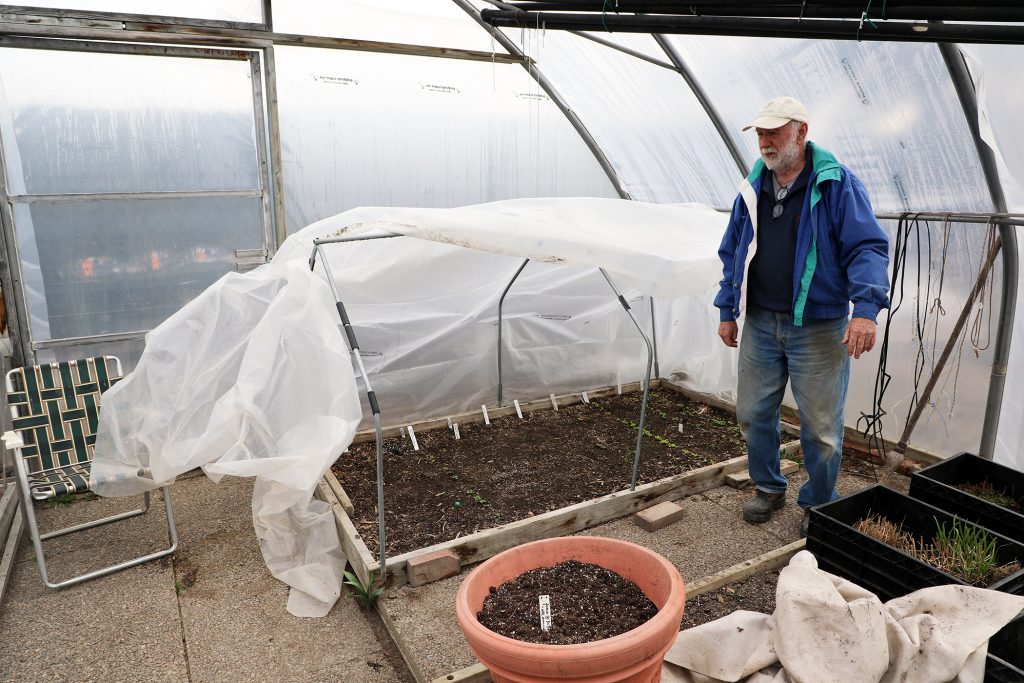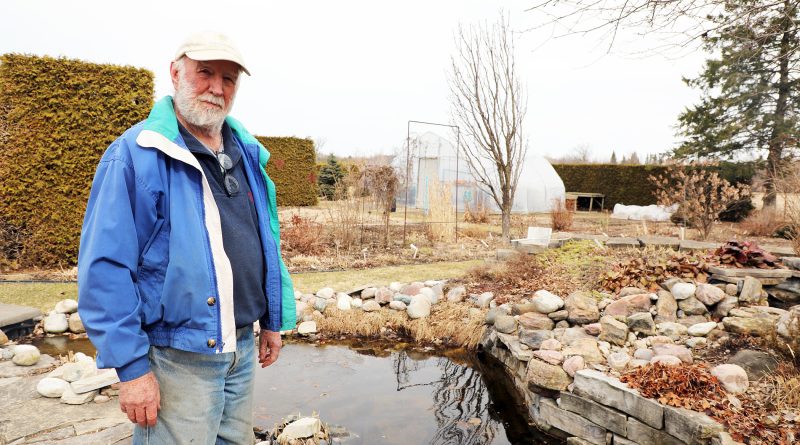Kinburn’s Reillys locally food secure
By Jake Davies - West Carleton Online
KINBURN – The Reillys have lived on their one-acre Diamondview Road property for nearly 50 years, and bit-by-bit have created a home complete with year-round food security.
When Phill and Carole Reilly moved in to the old farm house roughly 50 years ago, the home had no indoor plumbing, two wood stoves and a 60-amp fuse panel.
Now, the brick home, originally built in 1879, has solar power, greenhouses, a plethora of gardens and fruit trees, and most recently, an off-grid, climate-controlled root cellar – a place to store the food they grow from seed all year long.
The Reillys say they use approximately 40 per cent of their one acre for agriculture.
“It’s been an adventure,” Carole told West Carleton Online over coffee at their Kinburn home last week (March 26).
Reilly has a background in plant science and ecology from Carleton University and worked for decades for the federal government doing contract work for a variety of departments focused on environmental sustainability. Reilly was one of the lead volunteers in the project and construction of the large off-grid root cellar of the Deep Roots Food Hub officially opening in 2020.

For 25 years ending in 2009, the Reillys operated a commercial greenhouse business on the property known as Reilly’s Country Gardens.
“We started very small, and grew to a business with several employees,” Phil said. “The focus was native plants. There weren’t many nurseries in the area at the time. We grew 3,500 different perennials over the years.”
“You’ve had a lot of fun with it,” Carole said. “We did a lot of travelling on it.”
Phill is a member of the Canadian Association of the Club of Rome (CACOR), a non-governmental organization “dedicated to intelligent debate and action on global issues.”
CACOR was founded in 1974 as one of the first of now more than 30 national associations affiliated with the International Club of Rome.
“CACOR is autonomous, independent, and nonpartisan,” CACOR released in a statement. “Its main objective is to further the sustainability of the global ecosystem including the survival of humanity.”
For the last several years the couple have worked on expanding their vegetable and fruit production capabilities including growing, processing and storage.
“One of the issues I have is the depletion of resources,” Phil said. “It leads to an increase in disease, famine. If individuals want to take responsibility for these things, they ae going to have to undertake it themselves, such as food security.”
The Reillys have both a small, 240 square-foot (23 square-metres) indoor growing room, using additional gro-light units, and a 450 sq-ft (42 sq-m) outdoor greenhouse, allowing them to grow and harvest many of their own vegetable-based foods from late in March through to early January.
Shortly after the 2018 tornado, Phil joined several other CACOR Ottawa members creating and publishing a 25-page guidebook Plan to Survive: A Canadian Guidebook for Dealing with Climate Change in July 2019.
“In the case of most likely emergencies,” Phil said. “Perhaps there’s a break in the supply chain. Maybe there is no electricity. You would have water and food needs for seven to 10 days. How are you going to store it?”
An opportunity arose for the Reillys in 2020 when a family of mice had done enough damage to the back wall of their garage, they had created a fire hazard.
They hired a contractor to replace the back wall of the garage.
As Reilly was providing subject matter expertise on the thermal and moisture needs of root vegetable that would be stored at the Deep Roots food Hub project. He thought now was the perfect time to create a much smaller, similar storage system at his own home.
As the wall was already being rebuilt, he could just raise the insulations standards to that of what he would need to build a seven-by-10-foot (approximately two by three metres) root cellar in his garage.
He built a new plywood floor with room for four inches (10 centimetres) of Styrofoam sheet insulation. For temperature control to reach an optimum and sustained temperature of 3.5 degrees Celsius he had a small electric heater and had to purchase a 6,000 BTU unit window air conditioner. Phil had to trick the air conditioner and did this by overriding the temperature sensor. He did this by straightening the metal sensor, so it was outside of the unit and then secured a five-watt lightbulb next to the sensor to trick it in to thinking it was warmer that it really was.
Reilly had the wood and insulation on hand, and said the project cost him roughly $500 to complete.
“That all went in to the mindset of growing and storing food,” Phil said. “I love to be challenged with a new project.”











